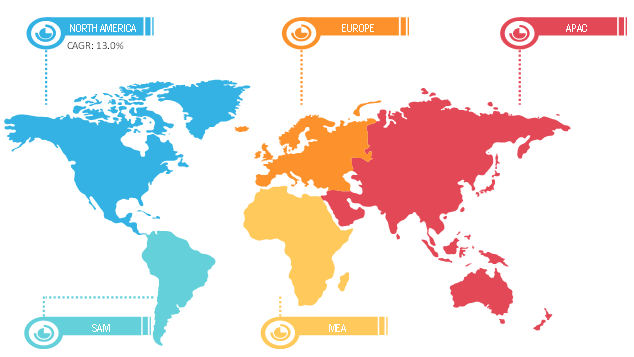Increase in Number of Organic Vineyards Boosts Organic Wine Market Growth
According to our latest market study, titled “Organic Wine Market Forecast to 2028 – COVID-19 Impact and Global Analysis – by Type, Packaging Type, and Distribution Channel,” the market is expected to grow from US$ 12,471.20 million in 2022 to US$ 24,557.14 million by 2028; it is estimated to grow at a CAGR of 12.0% from 2022 to 2028. The report highlights key factors driving the market growth and prominent players along with their developments in the organic wine market.
The demand for organic wine is significantly rising due to the convenience they offer to consumers. The organic wine market is driven by the rising number of consumers with a growing sense of awareness of sustainable products. Organic wines are mostly available in supermarkets, hypermarkets, specialty stores, and direct selling, which constitutes a significant market share in the distribution channel segment. The expanding direct selling distribution channels are another factor behind the rising sales of organic wine. Moreover, with the continuous economic growth of China, the purchasing power of consumers has increased. These consumers are willing to pay more for high-quality products that contain organic ingredients. Many market players have attempted to expand their business and become market leaders by establishing their online presence. Therefore, online retail shows considerable potential as the number of consumers with strong purchasing power is growing.
Avondale, Elgin Ridge Wines, Kendall-Jackson, The Organic Wine Company, Bronco Wine Company, King Estate Winery, Grgich Hills Estate, Emiliana Organic Vineyards, Società Agricola Querciabella Spa, and Frey Vineyards are the key players operating in the global organic wine market. These companies provide a wide range of product portfolios for the market. They have a global presence, which provides a lucrative opportunity for the market to serve a large set of customers and increase the market share. These market players are highly focused on developing products with advanced technology platforms to serve their customers better.
Impact of COVID-19 Pandemic on Organic Wine Market
The COVID-19 pandemic had initially affected the global organic wine market due to the shutdown of manufacturing units, rising prices of raw materials, shortage of labor, disruption of supply chains, and financial instability. Organic wine is a part of the beverages industry. The industry's disruption due to the economic slowdown caused by the COVID-19 outbreak has restrained the demand for organic wine. However, businesses have collected profits as previously imposed limitations are being eased across various countries. Moreover, the introduction of COVID-19 vaccines by governments of different countries has eased the situation, leading to the rise in business activities worldwide. The pandemic has also collaterally resulted in the growth of the organic wine industry post recovery from the production disruptions. The increased purchasing of alcoholic drinks has eventually aided the organic wine market after the onset of the pandemic.
Global Organic Wine Market Breakdown – by Region

Organic Wine Market Forecast and Size by 2028
Download Free Sample
Organic Wine Market Forecast to 2028 - COVID-19 Impact and Global Analysis By Type (Still and Sparkling), Packaging Type (Bottles and Cans), and Distribution Channel (Supermarkets and Hypermarkets, Convenience Stores, Online Retail, and Direct Selling)
Organic Wine Market Forecast and Size by 2028
Download Free SampleOrganic Wine Market Forecast to 2028 - COVID-19 Impact and Global Analysis By Type (Still and Sparkling), Packaging Type (Bottles and Cans), and Distribution Channel (Supermarkets and Hypermarkets, Convenience Stores, Online Retail, and Direct Selling)
The report includes the segmentation of the global organic wine market as follows:
Based on type, the global organic wine market is bifurcated into still and sparkling. Based on packaging type, the market is divided into bottles and cans. Based on distribution channel, the market is segmented into supermarkets and hypermarkets, specialty stores, online retail, and direct selling.
By geography, the organic wine market is broadly segmented into North America, Europe, Asia Pacific (APAC), Middle East & Africa (MEA), and South and Central America. The market in North America is further segmented into the US, Canada, and Mexico. The market in Europe is categorized into Germany, France, the UK, Italy, Russia, and the Rest of Europe. The market in Asia Pacific is segmented into China, India, Japan, Australia, South Korea, and the Rest of Asia Pacific. The market in Middle East & Africa (MEA) is further categorized into South Africa, Saudi Arabia, the UAE, and the Rest of MEA. The market in South & Central America is segmented into Brazil, Argentina, and the Rest of South & Central America.
Contact Us